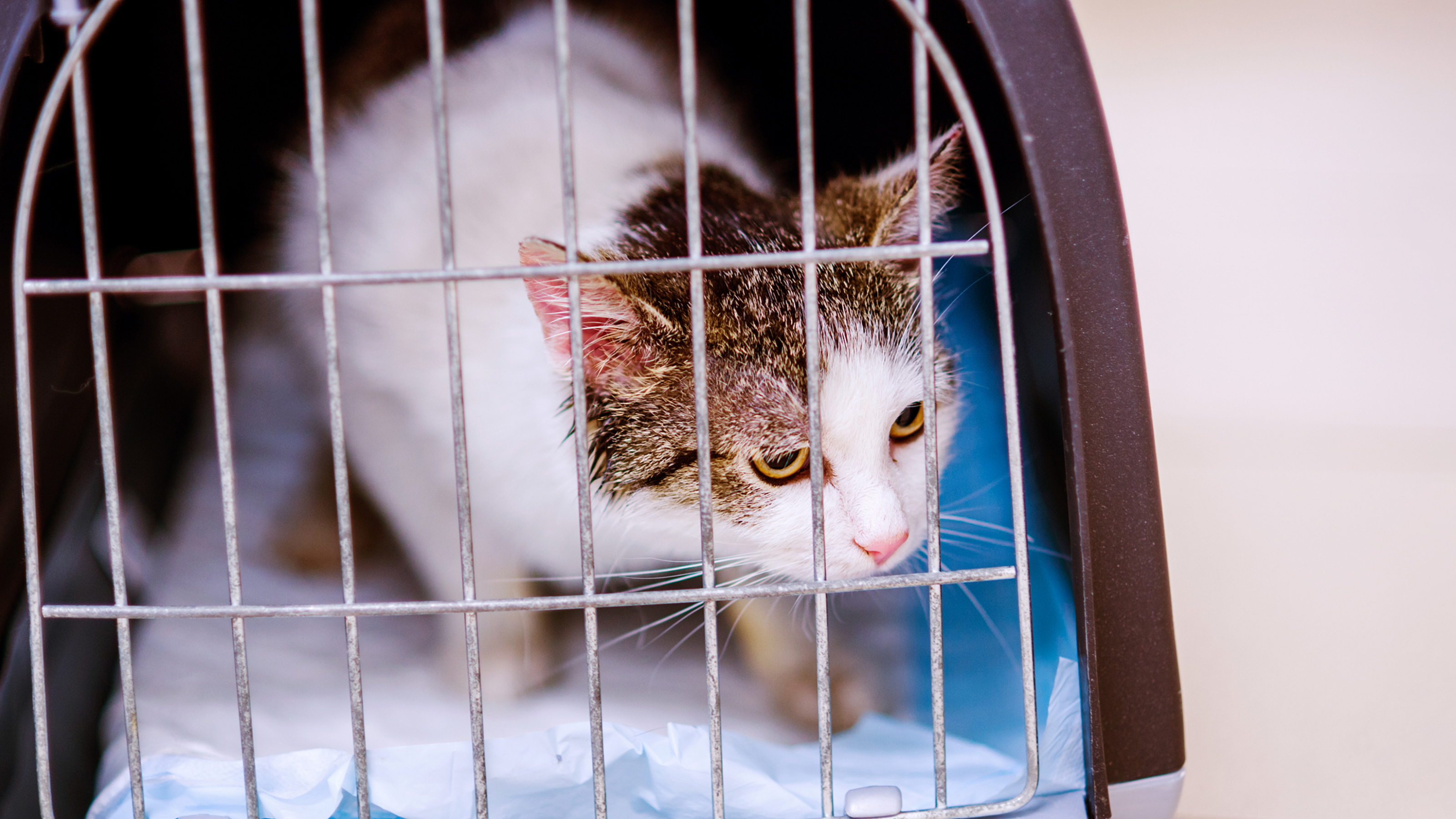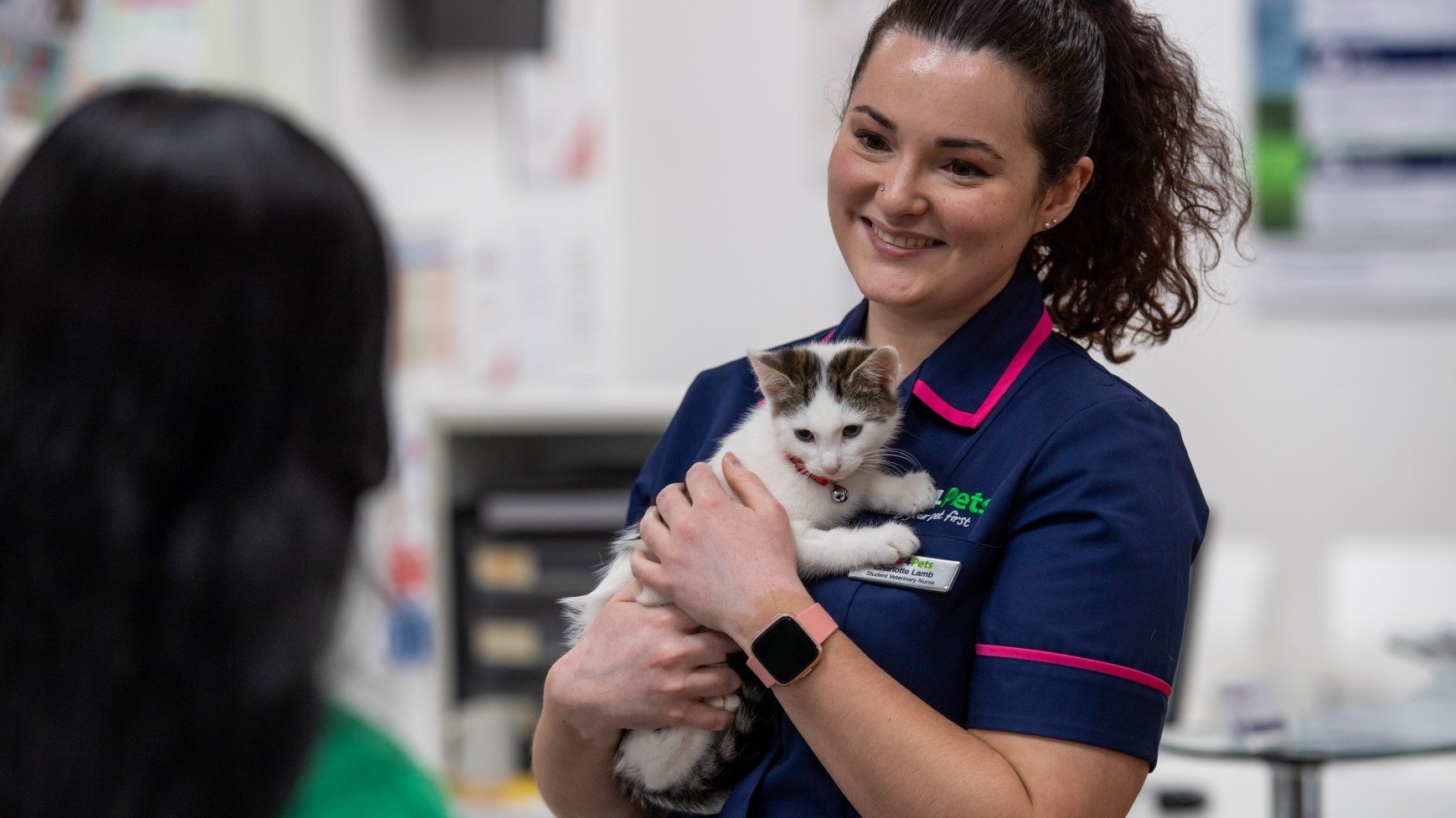
Car Travel With Your Cat
While some cats travel well they are the exception, and many cats (and their owners!) dread the appearance of the cat basket.
With a few exceptions, cats don’t usually enjoy travelling – they feel more secure in familiar surroundings. Unless you keep their carrier out at all times, cats often recognise its appearance as a sign that they’re going to be taken to the vet or to the boarding cattery and go into hiding.
Occasionally, travelling with your cat is unavoidable. With some careful preparation, you can make it easier and safer for your cat. One of the most useful things you can do is to get your cat used to going in their carrier.
Read more about travelling with your cat
For local travel, your cat should be comfortable in a sturdy, ventilated carrier made from plastic, fibreglass or similar. These materials are easy to clean, should your cat have an accident inside, and they are strong. On some carriers, the entire roof is removable.
This can make visits to the vet easier, since the cat can be examined while sitting in the bottom half. If the cat needs to be taken out of the carrier, for instance, to be weighed, it’s simply a matter of lifting them out, rather than reaching in and pulling them out or tipping the carrier so that they fall out of the door. Most cats are better travelling in their own carrier, rather than sharing with another cat. Even cats who get on well can behave differently towards each other when they’re anxious.
- Place a familiar blanket or bed inside the carrier and keep it in a room your cat uses regularly. If they don’t climb inside to explore within a couple of days, remove the top half of the carrier and let them use the bottom half as an extra bed for a week, before trying the lid on again.
- Once your cat is happy going in and out of the carrier with its lid, try closing the door for a few seconds at a time – don’t lock it, in case your cat is worried, but offer them a few little treats to eat while inside.
- Once your cat considers the carrier ‘part of the furniture’ and they’ll go inside it and can cope with the door being shut, you can lift it up gently for a few seconds. Wait a moment before letting your cat out again. You can post cat treats through the front door for your cat to find while they’re inside.
- Build up to carrying them carefully around your home (avoiding stairs – dropping the carrier now would not help!).
- Once your cat is used to being taken around in their carrier, try placing it in the car and progress to running the engine for a few minutes, before taking your cat back indoors and letting them out again. Don’t leave treats in the carrier during car rides, in case of choking.
It’s important that your cat travels securely inside a carrier, even if you’re just taking them on a short journey. Leaving them loose puts you at risk of an accident and, should you need to stop suddenly, they could get hurt. You can secure the carrier using a seat belt. A safe place for the carrier is the back seat. Never place a carrier in the boot, under luggage, or on top of the parcel shelf in direct sunlight. If you’re going on a long journey, consider how warm the car is likely to get and make sure there’s plenty of ventilation around your cat’s carrier.
Inside the carrier, place familiar bedding on top of some old newspaper or a puppy training pad, in case your cat has an accident during the journey. Take some spare bedding and a bag for soiled bedding, in case you need to change it at the other end. To reduce the risk of your cat going to the toilet or being sick during the journey, don’t feed them for up to about five hours before you set off, unless your cat is still under six months old, when you might only want to withhold food for two or three hours.
You can let them have access to water right until you set off, and you can buy water bowls that clip to the inside of the carrier and can be topped up from outside. Most cats will not drink during a journey, but if they feel really thirsty, they will have access to water if they want it. Don’t put treats inside the carrier on a journey – there’s a very small risk of choking which, even if it’s only momentary, will distract you when you’re driving, and also, if your cat feels sick, it’s better if they haven’t got a tummy full of food.
You can spray calming pheromones into the bedding, shortly before you place your cat inside. The spray lasts for hours and can help cats to feel relaxed and happy. Don’t be tempted to add more spray while your cat is in such an enclosed air space though, as it could make them cough or sneeze.
When you arrive at your destination you will most likely be somewhere unfamiliar to your cat – suddenly the basket might not seem so unappealing at all!
Make sure there is a reasonably small safe space for your cat (a single room is ideal), put out everything they will need, and then open the basket door.
Don’t pull your cat out of the basket if you do not have to.
Let your cat explore in their own time and retreat back to the carrier if they want to.
On a long journey, you may need to stop for a break. Remember that vehicles heat up very quickly, even when the outside temperature feels relatively cool. Never leave pets of any kind in a car with the windows up. Ideally, park in the shade and take turns with other passengers to leave the vehicle, so that someone can remain with it and the doors or windows can be kept open.
If you’re travelling alone, take food and drink with you so that you don’t have to leave the vehicle other than for a very quick toilet break – and leave the windows open to keep some air flowing through when you do. Don’t be tempted to let your cat out for a leg-stretch, no matter how loudly they’ve been miaowing. If they’re unhappy about travelling, you might have difficulty catching them again, or they could escape through an open window. It’s much safer to reassure them using your voice.
If your journey is going to take you away from home overnight, remember to pack supplies of your cat’s food, along with bedding, a litter tray and your cat’s preferred litter, just in case you can’t obtain it easily. Cats are often anxious and disoriented when they’re taken to new surroundings, so keep your cat indoors for at least the first two weeks after arriving somewhere new and supervise their initial explorations outdoors, just as you did when they started to go outside at home.
If you are planning to travel abroad, then view our advice on travelling abroad with your cat.
Health Plans to keep your cat healthy
At Vets4Pets we offer a range of Health Plans that make essential routine treatments more affordable. You'll save money on things like annual vaccinations, flea and worm treatment and routine health check-ups.

Cat Advice
Read more of our expert cat advice to keep your cat happy and healthy.
